You are here
Tortkara Mausoleum.

Historical and cultural heritage of Ulytau.
"We fill the long time of the campaign with songs
and swear: Beauty is alive, even though the lilies are dying
We - the Poets of a proud ancient familysing,
captivating hearts, for what - we do not know."
English poet and playwright James Elroy Flecker (1884 - 1915). Poem "Hasan ... Golden Journey to Samarkand". 1913.
Trips to architectural monuments of Ulytau.
Tortkara mausoleum is located at an altitude of 448 meters above sea level, located 26 meters from right bank of Karatal (Zhetykyz) River, 2.7 kilometers southeast of Khan-Ordasy settlement, 10.8 kilometers northeast of lake Kinembay, 12.2 kilometers east and slightly north of village of Sarlyk, 20.7 kilometers northwest of settlement of Ulytau, in Ulytau district of tregion of same name.
The Tort-Kara Mausoleum is built of burnt red brick of square cross-section (25 x 25 x 5.5 cm) on clay mortar. The technique of execution of works is not high, the material used is not of good quality. The volumetric-compositional and architectural-decorative solution of this building was entirely influenced by the previous period of decline in construction and applied art in Kazakhstan.
The arch is framed by a shallow U-shaped groove-niche, into which carved ceramic tiles measuring 23 x 23 cm are inserted. The tiles have a relief ornament with plant forms, made based on the motifs of koshkar-muyuiz. Under the arch, on the gable wall of the niche, two horizontally located belts with the same tiles are displayed.
The color of the tile pattern is dark red, and the background is pale greenish, made by painting. On the general pinkish-red background of the wall, these belts are not particularly noticeable. In order to slightly enliven the monotony of the facade walls on the peshtak and side surfaces of the walls, zigzag masonry is displayed under the cornice, which is one of the elements of the architectural design of this building. In terms of volumetric composition, this structure is similar to centric, portal-domed structures with an underdeveloped peshtak, and in terms of planning - to single-chamber buildings.
According to the plan, the Tort-Kara mausoleum resembles Alasha Khan. According to the external outline, it is a square - 7.25 - 7.25, and according to the internal - 3.92 x 3.94 m. The same traditional techniques are used in the character of the interior design.
Pointed arches, only with distorted shapes and proportions, cover niches in the walls and corners. Structural stalactites and pointed arches do not meet their purpose, they are more decorative than constructive. The dome is laid in horizontal rows, using the false vault method, so it took an elongated conical shape.
The dome rests on a drum, designed on the outside in the form of an octagonal prism with beveled edges. On the main axes of this drum, small light openings are left through which scant light penetrates inside. Unlike most mausoleums, the inner surfaces of the walls of Tortkara are plastered with clay and adobe mortars and whitewashed with lime.
In the niches on the plaster, multi-colored fresco paintings are made, depicting a complex Kazakh national ornament. The floor in the mausoleum is brick, laid in one layer "flat", on it there are traces of several burials.
Geographical coordinates of Tortkara mausoleum: N48 ° 46'41 E66 ° 47'32
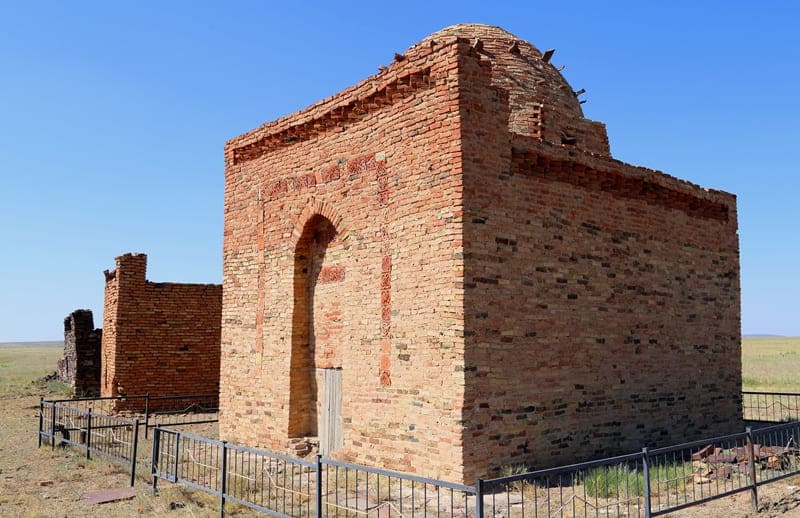
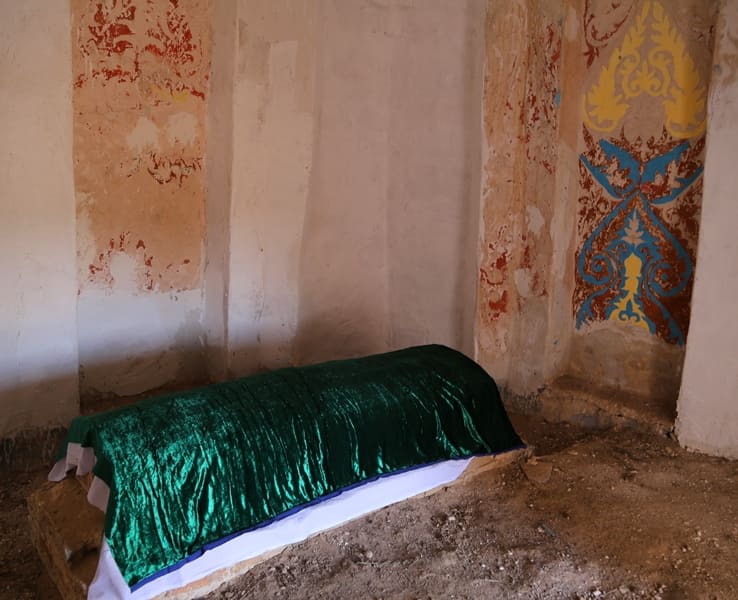
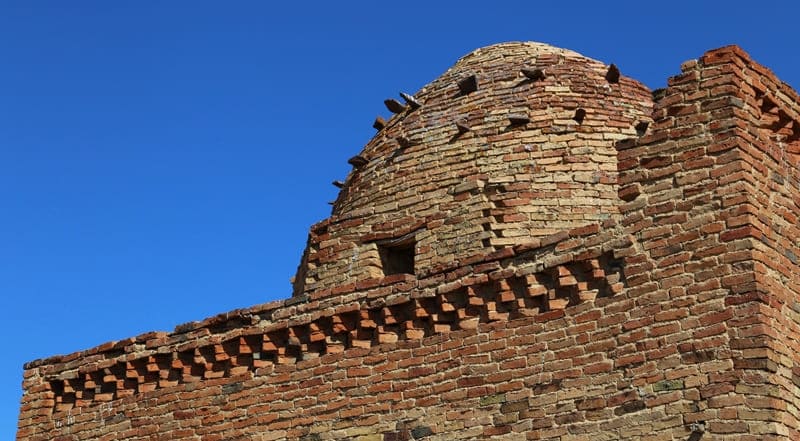
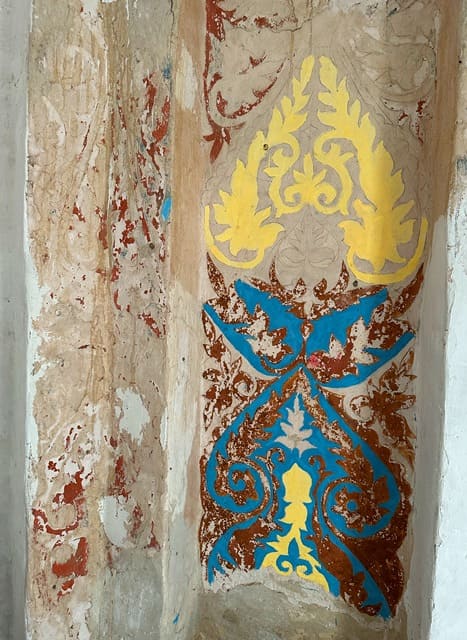
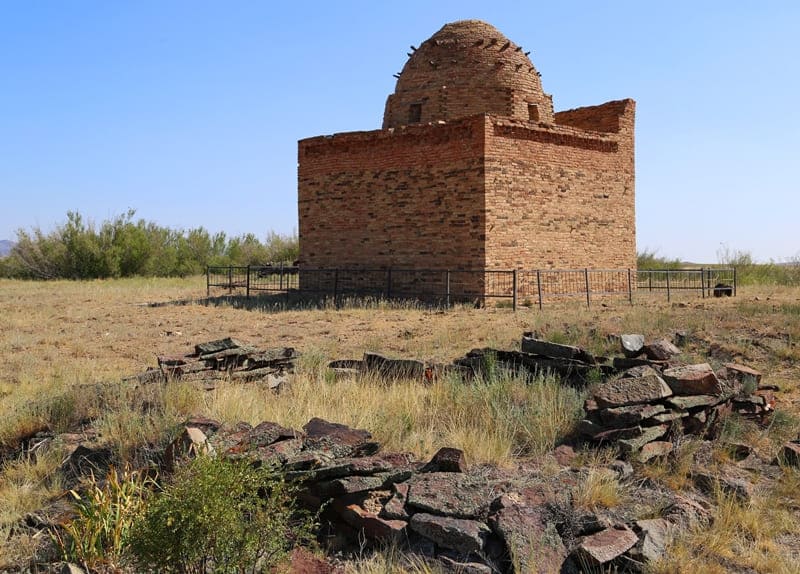
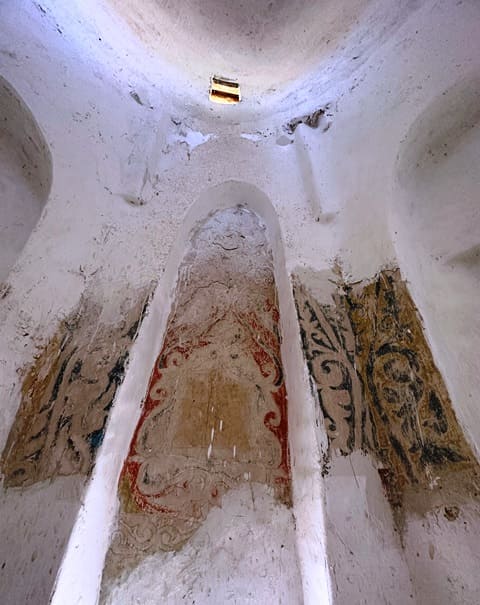
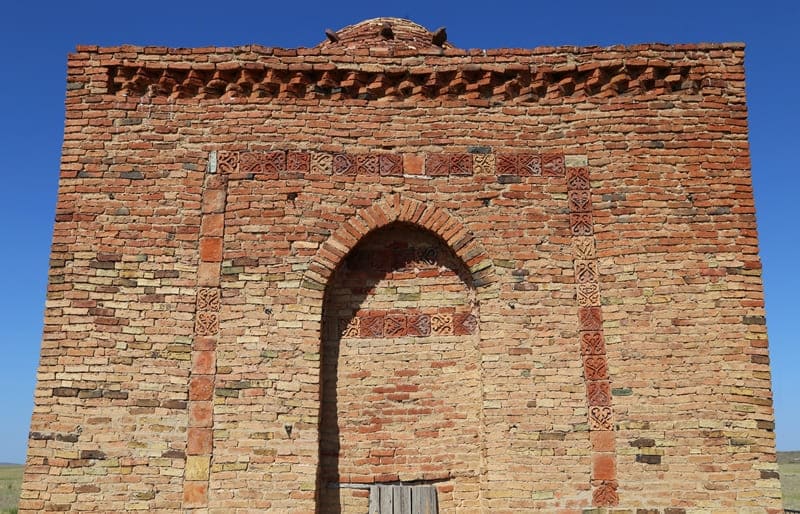
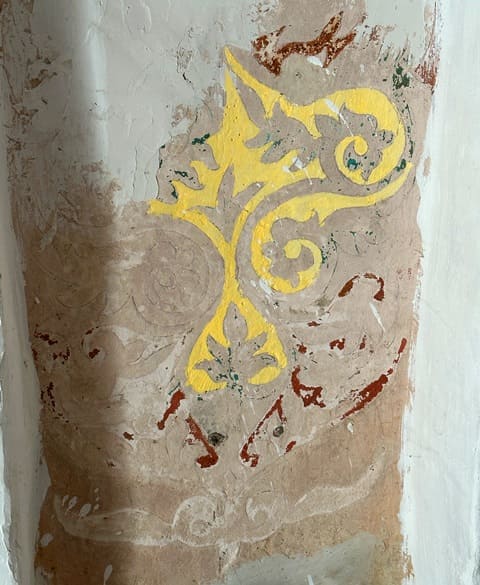
Authority:
Georgy Gerasimovich Gerasimov. "Monuments of architecture of the Kara-Kengir river valley in Central Kazakhstan". Publishing house of the Academy of Sciences of the Kazakh SSR. Alma-Ata. 1957.
Alexander Petrov.
Photos by:
Alexander Petrov.







